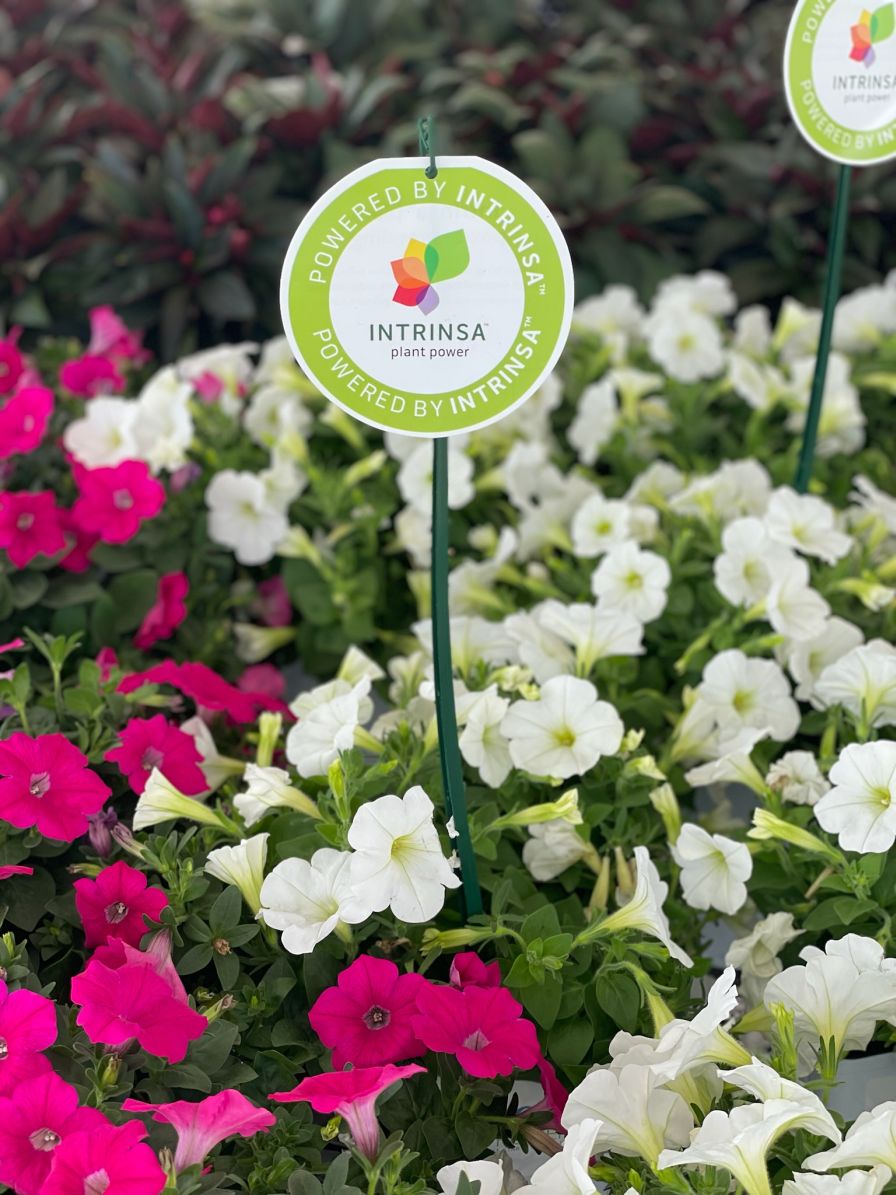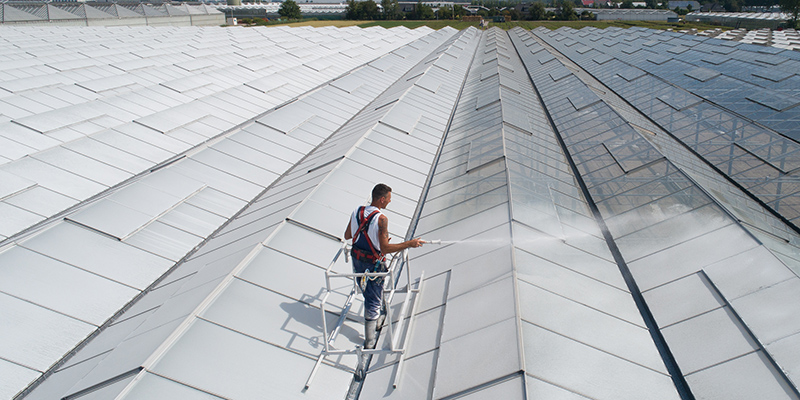Technology of the Year: How Intrinsa Is Breeding Stronger, Healthier Plants
 When greenhouse growers think of technology, they might have visions of some piece of shiny new equipment, or an automated system of moving plants or managing the greenhouse environment. However, technology also applies to the development of new plants, which can lead to efficiency and cost savings.
When greenhouse growers think of technology, they might have visions of some piece of shiny new equipment, or an automated system of moving plants or managing the greenhouse environment. However, technology also applies to the development of new plants, which can lead to efficiency and cost savings.
Such is the case with Intrinsa Plant Power, which was conceived by the research and development team at Dümmen Orange back in 2015, and was officially introduced in the company’s Ditto garden mums series in 2020.
As with any innovation, greenhouse technology and variety development can both take years. But as Intrinsa Plant Power illustrates, when the two come hand in hand, the results can exceed expectations.
How it Works
Intrinsa uses advanced speed-to-market molecular breeding technologies such as AI phenotyping, predictive breeding, and high-end resolution greenhouse validation through prolonged bioassays to identify natural traits within the genetic catalog of crops that demonstrate disease or virus resistance.
By deciphering and analyzing the genetic code of plants, Dümmen Orange can learn about the precise biological causes for existing or missing resistances. In the next step, Intrinsa carefully upgrades the DNA, systematically improving and extending crucial traits of a plant. In doing so, deficiencies are corrected from within, making use of the plant’s intrinsic capabilities. The result: plants that are indifferent to various kinds of stress.
Crops and Diseases Targeted
Intrinsa was introduced into the Ditto Garden Mum family through resistance to chrysanthemum white rust (CWR) in 2020. Since then, more than 80% of the Garden Mum program from Dümmen Orange is now CWR resistant, allowing for fewer chemical applications in production and long-term protection against the disease.
In Spring 2022, the Petunia Smartunia and Smartunia Windmill series were introduced to the industry as the world’s first tobacco mosaic virus (TMV)-resistant petunias using Intrinsa breeding technology. If plants with Intrinsa are exposed to the specific disease, they will not develop symptoms nor spread the disease to neighboring plants. Resistance to these diseases has proven to be strong and long-lasting.
As Intrinsa is introduced in additional crops, greater sustainability, cost savings, and stability of the supply chain from grower to home gardener should continue across the industry.
“The goal is to create stronger, more resilient, healthier plants that look fantastic from stock plant at the cutting farm all the way to the end consumer,” says Stephanie Whitehouse, North American Product Manager of Decorative Annuals at Dümmen Orange. “We’re still keeping to those phenological or series characteristics that have made Dümmen Orange leaders in the breeding industry. We’re just adding that extra benefit to each plant or series.”
Check out the video here to learn more.
Benefits Through the Supply Chain
Intrinsa was developed to provide benefits for growers, retailers, and consumers in a number of ways.
“Strong, long-lasting resistance with Intrinsa means crops are more sustainable and reliable,” Whitehouse says. “Growers will see decreased chemical usage and have a reassurance in the success and performance of their crop. Profitability for growers will increase through decreases in chemical usage, reduced crop loss, and improved order fulfillment.”
For retailers, it’s a great story to share when they get questions from consumers about what’s being sprayed on plants, where the plants are from, and whether they are pollinator-friendly.
“We did research with retailers who are always looking to justify to their customer why they need to pay more for premium plants,” says Marta Maria Garcia, Head of Marketing and Retail at Dümmen Orange. “If they can show the value of Intrinsa in producing stronger, healthier plants that will last longer in the garden, it helps justify their higher price.”
At the end consumer level, it’s about demonstrating that plants can have proven garden performance and will look fantastic over an extended period of time.
“Consumers feel like they’re getting more bang for their buck because their petunias are going to last longer in their hanging basket or their garden,” Whitehouse says.
 What’s Next
What’s Next
While petunias and mums have been the initial crops incorporated into Intrinsa (the goal is to get 100% of these categories represented), there is more on the way.
“Powdery mildew in kalanchoes is next in the pipeline,” Garcia says. “That will likely launch for the 2024 selling season.”
Then there are other categories teed up, including cut flowers.
“It’s not just the most common annuals and perennials,” Garcia says of Intrinsa. “We need to look at all of our businesses.”
Garcia smirks when thinking about the future potential of Intrinsa.
“We’re just getting started, and we’re really excited for what’s to come,” she says.
Lessons From the Team Behind Intrinsa
Hans van den Heuvel (Managing Director, R&D) and Tosca Ferber (Research Director) at Dümmen Orange have led the path from Intrinsa’s development to where it is today. Below, they share lessons learned along the way.
van den Heuvel: “Breeding for invisible traits, like resistances, is a paradigm shift in the ornamental world. However, being a first mover does not only come with advantages. There was no prior experience to fall back on, and all stakeholders had to be convinced and educated about the why, what, and how of Intrinsa. Our customers, the growers and the retail businesses, turned out to be the quick learners. They understood the contribution of Intrinsa to sustainable horticulture, and were less worried about crop losses due to pathogens and pests.”
Ferber: “Intrinsa is based on the hypothesis that resistances to viruses, fungi, bacteria, and other bugs exist, most likely in botanical material. However, there were no examples of targeted trait discovery in the ornamental world. Convincing scientists prepared to join a new team with such a challenging task wasn’t easy. Fortunately, it did not take long before the first resistances were discovered and technological tools developed for predictive breeding. I still spend quite a lot of time on training stakeholders on every new trait.”









